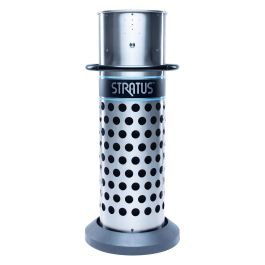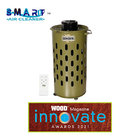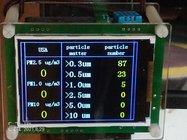-
We just finished moving the forums to a new hosting server. It looks like everything is functioning correctly but if you find a problem please report it in the Forum Technical Support Forum (click here) or email us at forum_moderator AT aawforum.org. Thanks! -
Beware of Counterfeit Woodturning Tools (click here for details) -
Johnathan Silwones is starting a new AAW chapter, Southern Alleghenies Woodturners, in Johnstown, PA. (click here for details) -
Congratulations to Dave Roberts for "2 Hats" being selected as Turning of the Week for April 22, 2024 (click here for details) -
Welcome new registering member. Your username must be your real First and Last name (for example: John Doe). "Screen names" and "handles" are not allowed and your registration will be deleted if you don't use your real name. Also, do not use all caps nor all lower case.
You are using an out of date browser. It may not display this or other websites correctly.
You should upgrade or use an alternative browser.
You should upgrade or use an alternative browser.
Air Filtration System
- Thread starter John McAlevey
- Start date
I owned a Stratus floor standing unit for a while. It was mostly a tripping hazard and failed to perform in any meaningful way.

 www.rockler.com
www.rockler.com

Stratus Pro Air Cleaner
Draws airborne dust down and away from your face while directing clean, filtered air upward—additional charcoal filter available (#67737, sold separately).
My impressions of the air scrubbers as I have heard them called, is that you probably need one per 100 sq. ft. of shop space. They do remove the fines, but you need a bunch of them for them to really work well.
robo hippy
robo hippy
Is this any different than the item many of have in our shops? https://jettools.com/708620b
Just FYI:Is this any different than the item many of have in our shops? https://jettools.com/708620b
Wood craft has that model on sale today -- cyber Monday deal.. Looks like 100 bucks off !
Ambient air scrubbers can help but they need to move a lot of air to be useful. It's more efficient to pick up as much fine dust as close to the source as possible using a high volume dust collector with efficient filters. Tough to do with a lathe compared to other woodworking machines.
My shop-made scrubber has a nominal 2500 cfm squirrel cage blower to filter the approximate 10,000 cubic ft of air in the shop. My central dust collector pulls about 800 cfm at a far higher static pressure, but it's processing air with a much higher dust load from close to the source. I know from using a Dylos particle counter that the dust collector is far more effective, even when using the lathe.
My shop-made scrubber has a nominal 2500 cfm squirrel cage blower to filter the approximate 10,000 cubic ft of air in the shop. My central dust collector pulls about 800 cfm at a far higher static pressure, but it's processing air with a much higher dust load from close to the source. I know from using a Dylos particle counter that the dust collector is far more effective, even when using the lathe.
Hi Kevin. I’m in the process to made scrubber and would like to know how you made yours.
Pretty simple- a plywood box about 26" x 26" x 48" with a squirrel cage fan in one end pulling air through a 24" x 24" pleated prefilter and a 24" x 24" x 36" multi-pocket bag filter. Blower from Graingers, filters from Filters Inc.Hi Kevin. I’m in the process to made scrubber and would like to know how you made yours.
To truly protect yourself, go the papr route, for cutting and sanding dry wood. A dc with fine filter helps a lot, as do various shop air cleaners, but a papr ensures you get clean air in you.
Ambient air scrubbers can help but they need to move a lot of air to be useful. It's more efficient to pick up as much fine dust as close to the source as possible using a high volume dust collector with efficient filters. Tough to do with a lathe compared to other woodworking machines.
I know from using a... particle counter that the dust collector is far more effective, even when using the lathe.
Ditto
I recommend buying a particle counter before buying your next piece of DE equipment. That way you will know the extent of the DE task you have to solve and whether you are making progress with any subsequent measures you take.
Here is the reading in my workshop after an hour of power sanding at the lathe while my DE system has been running. The PM 2.5μg/m3 are the bad guys...
Ditto
I recommend buying a particle counter before buying your next piece of DE equipment. That way you will know the extent of the DE task you have to solve and whether you are making progress with any subsequent measures you take.
Here is the reading in my workshop after an hour of power sanding at the lathe while my DE system has been running. The PM 2.5μg/m3 are the bad guys...
I'd be interested in knowing who supplies your meter kit, or is it home built? I'm just starting to research particle meters.Ditto
I recommend buying a particle counter before buying your next piece of DE equipment. That way you will know the extent of the DE task you have to solve and whether you are making progress with any subsequent measures you take.
Here is the reading in my workshop after an hour of power sanding at the lathe while my DE system has been running. The PM 2.5μg/m3 are the bad guys...
Thanks Neil
More than once, I have wondered if it would be possible to set up the main DC system to run at slow speed......
robo hippy
robo hippy
I'd be interested in knowing who supplies your meter kit, or is it home built? I'm just starting to research particle meters.
Thanks Neil
The image I posted is the key component of most particle counters, but it is a bit fragile by itself. It is better for most of us to get an enclosed one with rechargeable battery, like one of these.
Best PM2.5 Air Quality Monitors in 2023 – Smart Air
Note: Price doesn't necessarily indicate quality!
But, if you are into electronics and putting our own together, search for one of these with a built in readout screen...

Air Quality Detector Module Dust Sensorpm1.0 Pm2.5 Pm10 Tester Home Office Car for sale online | eBay
Find many great new & used options and get the best deals for Air Quality Detector Module Dust Sensorpm1.0 Pm2.5 Pm10 Tester Home Office Car at the best online prices at eBay!
www.ebay.com.au
...or if you are into a bit of programming, just buy the sensor module, like the Plantower PMS5003 (or one of the later modules... they all come from China), and put the other components together yourself....
If you go that way, please come back and share with us what you did.
More than once, I have wondered if it would be possible to set up the main DC system to run at slow speed......
robo hippy
Down here, if the motor on the DE is 3ph running off a VFD you can dial the frequency up and down to whatever speed you want, within reason. Most of the Clearview and similar DE system owners down here crank their VFDs up from 50Hz (that's our power supply frequency) to 60Hz or 70Hz to get more air speed and better fine dust collection. Likewise, you can also dial down the speed if you just want to leave the DE running in air scrubber mode.
I'm not familiar enough with the US power system to know what would apply there, but the following discussion on another forum (which is also in part about noise) covers some aspects of adding a VFD...
Any Clearvue owners here running 3phase motors with vfd? [Archive] - Sawmill Creek Woodworking Community
I own the CV1800 with the Leeson single phase motor. I am planning to purchase the Baldor 3 ph motor Clearvue sells unless I find something else with the same specs but in 3 phase. I have a very knowledgeable person on the Hobby Machinist forum I am a member of that found a 5hp output...
sawmillcreek.org
My DE system can do enough room air changes to scrub any escaped and suspended fine dust in my workshop in 15 to 20 seconds. I use the above mentioned particle counter to monitor that.
I've been working on an air quality project in my shop, and the topic of particle counting is fraught with complexity. I've been using a Dylos meter and am only familiar with the limitation of that brand. Despite the fact it claims to have two channels to count particles >1 uM and >5 uM, there is quite a bit of overlap. Something t keep in mind is the number of particles isn't the basis for exposure levels; it is really the mass per volume (ug/ cubic meter) which is used in occupational health regulation. It is possible to convert # of particles to mass per volume, but you have to know the particle density, which is going to vary based on the material. Nevertheless, the particle meters are useful for evaluating relative clearance of dust from your shop. In other words, how effectively is your DC working.
I have found that a simple box fan with a filter strapped on the front clears the air really well. I've been finishing up some measurements and working on writing a short explanation of my findings to share with this community. I will say that from my reading of the research literature, making the assumption that very small WOOD DUST particles (PM2.5 or less) are the major health risk is not accurate. There is very little evidence for lung damage from wood dust, which is the organ associated with damage from PM2.5. Instead, there is a very strong correlation between wood dust exposure and nasal cancers in occupational woodworkers (sawing and milling operations), so it would seem there is actually a higher risk from the larger particles. It is also important to keep in mind that the documented risks are for populations of people, not individuals. Biology is all about variation, so each individual woodworker is going to have a different health risk from exposure. As a result, the best policy is what they call ALARA - as low as reasonably attainable.
I have found that a simple box fan with a filter strapped on the front clears the air really well. I've been finishing up some measurements and working on writing a short explanation of my findings to share with this community. I will say that from my reading of the research literature, making the assumption that very small WOOD DUST particles (PM2.5 or less) are the major health risk is not accurate. There is very little evidence for lung damage from wood dust, which is the organ associated with damage from PM2.5. Instead, there is a very strong correlation between wood dust exposure and nasal cancers in occupational woodworkers (sawing and milling operations), so it would seem there is actually a higher risk from the larger particles. It is also important to keep in mind that the documented risks are for populations of people, not individuals. Biology is all about variation, so each individual woodworker is going to have a different health risk from exposure. As a result, the best policy is what they call ALARA - as low as reasonably attainable.
I was surprised at the price and review of this one. https://www.amazon.com/Qingping-Monitor-Compatible-Temperature-Humidity/dp/B092HK4BB1
I would be interested in home made air scrubber plans also. Thanks for this topic and excellent information.
I would be interested in home made air scrubber plans also. Thanks for this topic and excellent information.
... Nevertheless, the particle meters are useful for evaluating relative clearance of dust from your shop. In other words, how effectively is your DC working.
...I will say that from my reading of the research literature, making the assumption that very small WOOD DUST particles (PM2.5 or less) are the major health risk is not accurate. There is very little evidence for lung damage from wood dust, which is the organ associated with damage from PM2.5. Instead, there is a very strong correlation between wood dust exposure and nasal cancers in occupational woodworkers (sawing and milling operations), so it would seem there is actually a higher risk from the larger particles.
It is also important to keep in mind that the documented risks are for populations of people, not individuals. Biology is all about variation, so each individual woodworker is going to have a different health risk from exposure.
...As a result, the best policy is what they call ALARA - as low as reasonably attainable.
Completely agree with the first and third points
Not sure how If I'm with you on the middle health statement; I don't have the expertise and haven't surveyed the work of those who have, so this falls for me in the maybe, jury's out category
However, I'm not sure it matters to how we want to proceed. Whether we want to control dust to prevent cancers, allergic sensitivity, or asthmatic triggering, we want to capture dust at the source, remove all we can from the air and protect our airways from what's left.
I started my woodworking career in the days when everyone was cartoon Pigpen with dust clouds following every step... I do not miss those days
I agree, Gary. My belief is that we should be controlling dust to whatever level is "reasonable". However, I think we all face the dilemma of defining what is reasonable and finding a solution that 1) we feel we can afford, and 2) isn't so obnoxious that we don't use it. The notion that we have to clear all of the dust from the air makes the problem overwhelming, so for some of us it is easy to justify not dealing with it. This is my concern when we assume that the fine dust is what "really matters" because the way to deal with it is rather expensive and/or obnoxious (i.e. a big noisy cyclone or a helmet/breathing tube clamped to your head), so it is less likely to happen. I think your statement is more clearly on the mark--that we need to take a first step in dealing with dust and then take additional steps as necessary.However, I'm not sure it matters to how we want to proceed. Whether we want to control dust to prevent cancers, allergic sensitivity, or asthmatic triggering, we want to capture dust at the source, remove all we can from the air and protect our airways from what's left.
We just had Bill Pentz, an expert on dust collection, talk about just that at our last woodworking club meeting.I was surprised at the price and review of this one. https://www.amazon.com/Qingping-Monitor-Compatible-Temperature-Humidity/dp/B092HK4BB1
I would be interested in home made air scrubber plans also. Thanks for this topic and excellent information.
He designed this air scrubber that is very effective, and is reasonably priced. He did say it was pretty loud.
Dust Collection Research - Air Cleaner
This site is all about dust collection and protection. It shares the risks from fine dust exposure, how to measure your risks and how to effectively protect yourself and those close to you from airborne dust hazards. Fine dust is so extensively studied that researchers call it PM short for...
www.billpentz.com


